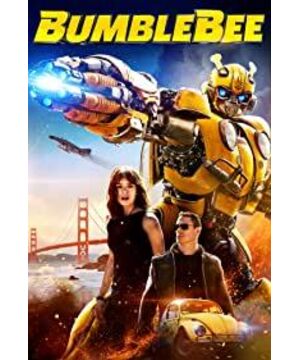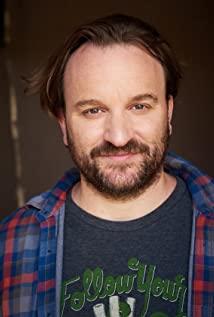Probably everyone still remembers the unprecedented success of word-of-mouth and box office wins when the live-action version of "Transformers" was launched by Michael Bay in 2007. However, after experiencing five violent bombings, the extra part of "Bumblebee" seems to be Paramount's adjustment and testing of new directions. Unlike the previous mecha battles, although there is no lack of interstellar chaos between Autobots and Decepticons, "Bumblebee" is more like a growth movie with human and alien emotions as the main line.
The Autobot Bumblebee is obviously the most popular character in the "Transformers" series. In this rumor, he continued his mission of being a "Hermes" messenger in the series, acting as an important part of the communication between the Autobots and the earthlings. intermediary. In the first part of "Transformers", he was the love witness of Megan Fox and Sia LaBeouf, and this part also witnessed and accompanied the heroine's personal growth.
Although the cost of "Bumblebee" is not as high as that of the "Transformers" series, after its release in North America, Rotten Tomatoes and IMDB have received very good reviews. Funny, humorous, exciting, and the specific cuteness and plot can be seen in the movie. Here are some digressions that I personally find very interesting.
"Transformers", "Saint Seiya", Marvel Universe, DC Universe series of movies and comics, and of course, including "Aquaman" and other sci-fi themes that are still in hot screenings, actually have one thing in common: when depicting your own sci-fi universe They are all borrowing the motif of classical mythology. For example, as we all know, "Sea King" comes from the mythology of Poseidon and "Atlantis"; "Thor" series and "Wonder Woman" more clearly absorbed classical myths such as Northern Europe and ancient Greece; "Hornet", I personally think it has the color of the ancient Greek messenger and Hermes, the messenger of the gods.
According to the classification of the Italian philosopher Vico in The New Science, history is divided into three stages: the age of gods, the age of heroes, and the age of secular (human). In fact, these three eras can be used as the current classification of science fiction movies.
In terms of text, Hesiod’s "The Book of Gods·Work and Time" records the birth of the world and the part of the battles of the gods, depicting the age of the gods. According to myths and legends, the universe was born in Haos, the god of chaos, that is, Chaos in English. In Haos, the other old gods and Titan (the giant god) were separated, and then the gods split into the Gods of Ititan and The two factions led by Zeus fought against each other, and Zeus finally won.
In the same way, in "Transformers", the earliest life form of the universe is called "Supreme Prince", which corresponds to Haos in Greek mythology. The Supreme Lord of Chaos created two ancient life forms, one righteous and one evil, namely "Yuanshi Tianzun" and "Universal Emperor". The Universe is the crystallization of all the wisdom of the Supreme Lord, but he is inherently evil and counteracts the master Supreme Lord. Therefore, he is the biggest villain in "Transformers", a god who transcends time and space and represents darkness and destruction. Correspondingly, Yuanshi Tianzun also represents order, light and creation.
Yuanshi Tianzun and Universe Emperor fought with each other. When the former was in a weak position, he transformed himself into a planet called "Cybotan" and sealed the Universe Emperor with this planet. Subsequently, a new mechanical life form (with the participation of other characters such as the five-faced monster in the comics) was born on this planet, which is Transformers. The derived Transformers are divided into two factions of good and evil with Yuanshi Tianzun and Universe Emperor as their spiritual leaders. They are the Autobots led by Optimus Prime and the Decepticons led by Megatron (Decepticons). ). After this part of the struggle came to the earth, "Transformers" actually walked out of the "age of gods" and entered the "age of heroes."
The founding universe of "Transformers" is almost identical in form to ancient Greek mythology. In ancient Greek mythology, the descendants of Haos continued to fight for the supreme power. Zeus’s father defeated his own father and became king (as the Emperor of the Universe defeated the Supreme King), and Zeus defeated his father and became king. After winning, all the Titans who opposed him (all descendants of his elder brothers) were imprisoned in the abyss of darkness.
However, there are not many sci-fi movies that directly use Clash of the Gods as the motif. The main reason may be that the existing adaptations are not very successful, such as "War of the Gods", "Wrath of the Gods", "Scary God of War" Wait, no one is spared.
Just saying that Transformers came to the earth, history has entered the age of heroes from the age of gods. In ancient Greek mythology, the greatest heroes are undoubtedly the demigods Hercules and Achilles. The latter is the role of Brad Pitt in Troy.
Therefore, compared with the age of the gods, the most fundamental feature of the age of the heroes is that the age of the gods did not involve human beings. In the age of the heroes, the war of the gods spread to the human world. This is a stage where gods and men coexist.
In ancient Greek mythology, the creator of mankind is Prometheus. He is Titan, the enemy of Zeus, so he will be punished by the latter. Prometheus created mankind in his own form, and Athena, the goddess of wisdom, gave mankind soul and life. Of course, the most famous play of this motif is Ridley Scott's "Prometheus" and "Alien" series.
Regarding the heroic age, the "Odyssey" and "Iliad" in Homer's epic mainly depict the stories between gods and people in that period. The familiar Oedipus, Hercules, Trojan War, Theseus, Odyssey Tour, etc., are all representative images of this era.
Hollywood has always had a lingering "heroism" complex. Perhaps it is precisely because of the incomparable supernatural power and the sense of human participation that the vast majority of science fiction movies and comics on the market will try their best to depict stories with the hero age as the theme. Among the works we are familiar with in recent years, DC is more willing to learn from mythology to create heroes than Marvel. Both "Wonder Woman" and "Aquaman" have relatively strong elements of divine residence, but Marvel also has "Thor".
Thor, Thor, is taken from Norse mythology that is different from the ancient Greek mythology system, but his power to control storms and thunder and lightning, as well as the power struggle with his brother Loki, are similar to Zeus; Wonder Woman is Zeus and Amazon The queen’s daughter, the villain Harris is also the son of Zeus. The background of "Aquaman" is the ten sub-continents of the sea god Poseidon. There is no record of Atlantis in Greek mythology. The earliest text on this mysterious land comes from Plato's dialogue, so "Aquaman" and "Wonder Woman" "Xia Xia" can be regarded as the spread of ancient Greek mythology, that is, folklore and modern adaptations. Like Thor and Wonder Woman, Aquaman tells the classic story of the brothers seizing power.
Although the above three movies are about power struggles in the age of the gods, they all take place in the human world. Those familiar with Marvel and the DC universe should know that these movies describing the age of the gods are to a large extent It is paving the way for "Justice League" and "Avengers" to play a bigger game of chess.
In the same way, whether in the "Transformers" series or "Bumblebee" (the opening planet duel), although they have shown the battle of the Bo and Decepticon gods on the planet Cybertron, they are basically fighting for the hero age. God-man melee came to ambush.
In a nutshell, in the vast majority of movies derived from mythological motifs, the age of the gods has receded and existed as the background to narrate the story of the heroic age. This point was cleverly pointed out by a line in "Sea King". Mera said to Sea King, "What the people need is not a king, but a hero."
The reason for the transition from the age of gods to the age of heroes and humans is nothing more than two: the decline of gods and the rise of humans.
From a philosophical point of view, perhaps the main reason for the decline of the gods is the inability to logically explain the origin of evil. On the one hand, God wants to emphasize his absolute truth, goodness, beauty, and authority. On the other hand, even if people completely obey God’s authority, evil and darkness have never disappeared from the world. In other words, if God is all-knowing, all-powerful and all-good, why does evil exist; if evils such as natural and man-made disasters are God’s punishment for bad people, why do good people often fail to pay for them?
Take this to understand the sentence in "Sea King": The people no longer need a king, because the king's sacred authority comes from the authorization of God. When God cannot punish evil, what the people need is not a monarch, but a hero. The existence of heroes solves the conflict between gods and people on the issue of good and evil, and at the same time provides endless material for superhero movies.
Back to the film "Bumblebee".
"Bumblebee", as a fan, is obviously not simply taking the superhero route. It is different from the single-line films such as "Aquaman" and "Wonder Woman" that were separated from the Marvel Universe and the DC Universe, trying to move closer to the age of the gods. The Wasp did the opposite, moving closer to the secular and human age.
As a pioneering work in the secular era, in the movie, Bumblebee represents two images: one is a god or superhero who walks out of the battlefield and into the folks; the other is a "foreign race" who wants to learn to get along with people in the human world Or "heterogeneous".
There have been many attempts at these two types of film and television dramas, the former such as Governor Schwarzenegger’s Virgo "Hercules in New York", and the superheroes "Spiderman" and "Superman" disguised as ordinary people. One kind of image is everywhere. "Avatar", "King Kong", "The Shape of Water", and even the Korean drama "You from the Stars" have all described the problem of how aliens and humans get along. This is also a movie drama of this kind. An important source of sense.
The so-called secular and human age is nothing more than getting rid of divinity, and experiencing and amplifying the complex emotions of the human world and various weaknesses in human nature. "Bumblebee" shows the process of aliens entering the human world, from unfamiliar to familiar, and establishing relationships with humans. Coupled with his closeness to humans, the classic image that people can think of is "ET Alien".
When ET was released in 1982, sci-fi movies were just a genre alongside romance, horror, and drama. Nowadays, sci-fi movies have become the absolute dominance of commercial movies. In this sense, "Bumblebee" can also be regarded as a journey back to the original in the era of science fiction movies.
View more about Bumblebee reviews











